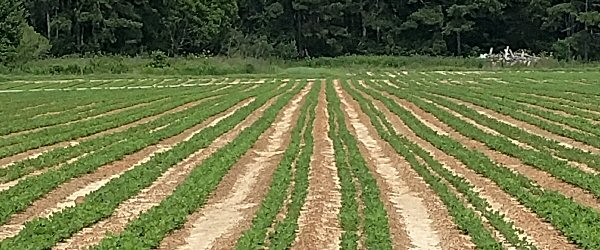Losing Ground: Why specialty crop farmers are steadily falling behind in their access to and benefit from federal conservation programs and what can be done about it
INTRODUCTION
 If one could track the difference between the amount of financial assistance received by major crop and livestock producers since the passage of the 2002 Farm Bill and the financial assistance received by specialty crop producers, the discrepancy would likely be staggering. Certainly there have been significant examples of specialty crop participation in conservation in North Carolina, California, Michigan and other states, but the relative amount of financial assistance has been marginal and the successes in one growing region have not generally been transferable to other areas. As a result, while the amount of money has increased the proportional share that is functionally available to specialty crop producers has shrunk since 2002.
If one could track the difference between the amount of financial assistance received by major crop and livestock producers since the passage of the 2002 Farm Bill and the financial assistance received by specialty crop producers, the discrepancy would likely be staggering. Certainly there have been significant examples of specialty crop participation in conservation in North Carolina, California, Michigan and other states, but the relative amount of financial assistance has been marginal and the successes in one growing region have not generally been transferable to other areas. As a result, while the amount of money has increased the proportional share that is functionally available to specialty crop producers has shrunk since 2002.
The paper outlines the basic issues and offers solutions to this growing discrepancy. The solutions include both establishing a commitment by USDA leadership and the institution of policies that address the problems encountered by specialty crop producers. If acted upon, these proposals offer the means for increasing the equity in conservation programs and for advancing resource conservation by a large and progressive segment of agriculture. In addition, these proposals have relevance to other groups of farmers who have been underserved by conservation programs including small and limited resource farmers, organic and beginning farmers.
SOLUTIONS
In general, the solutions to these endemic issues involve providing the outreach, education, technical assistance and conservation planning assistance that make participation in conservation programs possible. Implementing the solutions will necessitate both leadership by NRCS/HQ and the implementation of specific steps within the conservation programs.
Leadership — Direct the Secretary to assess the current involvement of specialty crops and develop a plan to improve access and participation six months from enactment – assessment should involve specialty crop representatives and NRCS staff – plan should be circulated for comment and then implemented.
Outreach — The Secretary could be directed to allocate a portion of Conservation Innovation Grants in each state to provide outreach for specialty crop producers on EQIP, providing information on procedures, options, and basic conservation. Funds would be available to universities or private organizations but would need to be coordinated with existing specialty crop organizations.
Technical Assistance — There needs to be more effective options for technical assistance. The TSP option is woefully ineffective for specialty crops. The Secretary needs to be directed to establish sufficient technical assistance options, such as cooperative agreements with other agencies and private organizations, to provide technical assistance. In addition, the Secretary could increase the percentage of EQIP dollars that could be allocated to TA based on the prevalence or interest among specialty crop producers in participating in EQIP. Those funds would be designated for use with those growers.
Education — In the Research Title, Congress could establish a Conservation Education Program designed to develop education programs at the state level for Extension and University staff on the basics of resource conservation and the conservation programs. That program would then be delivered to specialty crop producers in conjunction with outreach programs.
Conservation planning — This is basically a resource issue - the amount that Congress appropriates to Conservation Technical Assistance needs to be increased as recommended by NACD. In addition, the Secretary could be directed to allocate a specific amount of dollars to the development of conservation plans for specialty crop producers.
Adopted as a set of provisions these options would have a significant impact on the access to conservation programs by specialty crop and, if extended, to other underserved producers.
Download the CAP White Paper regarding "How a Lack of Conservation Planning and Technical Assistance is Limiting the Ability of Small Farmers and Specialty Crop Producers to Participate in Federal Conservation Programs" (PDF Format)
Putting the Farm Bill to Work Quick Links
- Appalachian Region
- California
- Georgia
- Michigan
- North Carolina
- North Carolina Apple Growers
- North Carolina Nursery Crops
- North Carolina Christmas Trees
- North Carolina Strawberry Growers
- North Carolina Strawberry Survey
- North Carolina Sweetpotato Producers
- North Carolina Sweetpotato Survey Summary
- Western North Carolina Vegetable Growers
- Oregon


